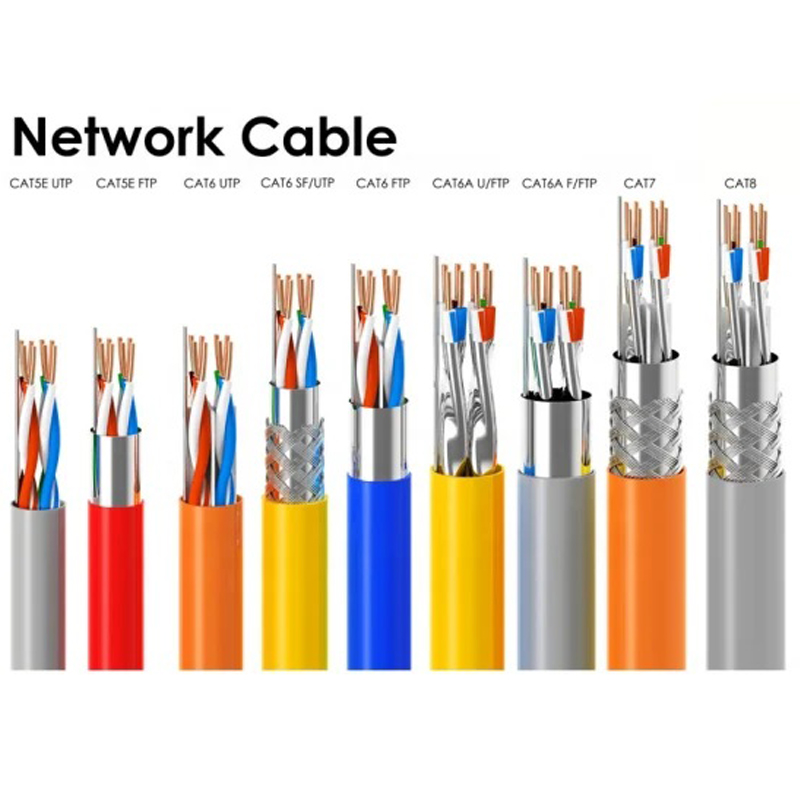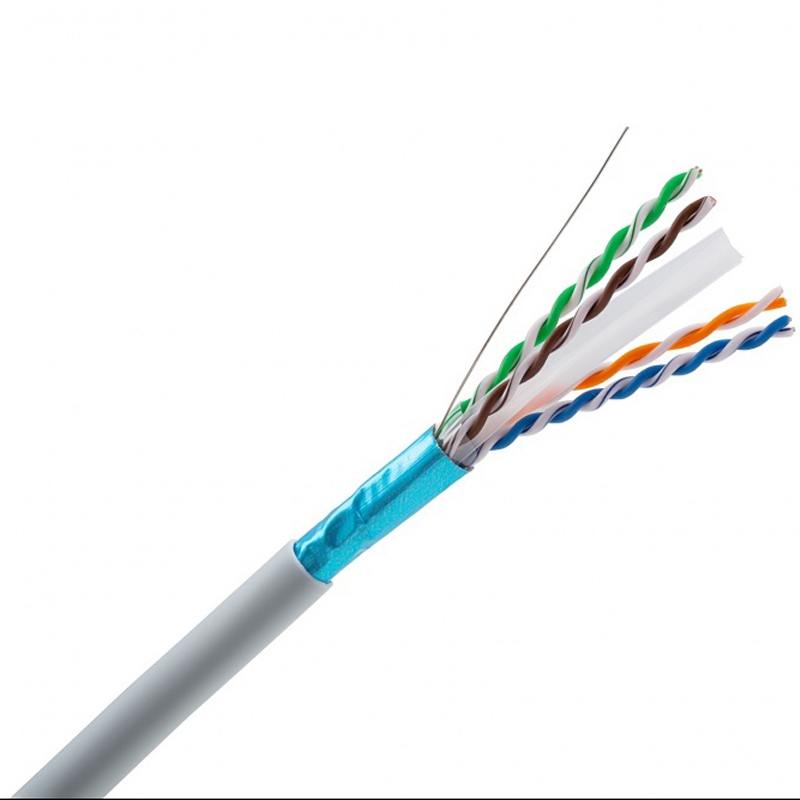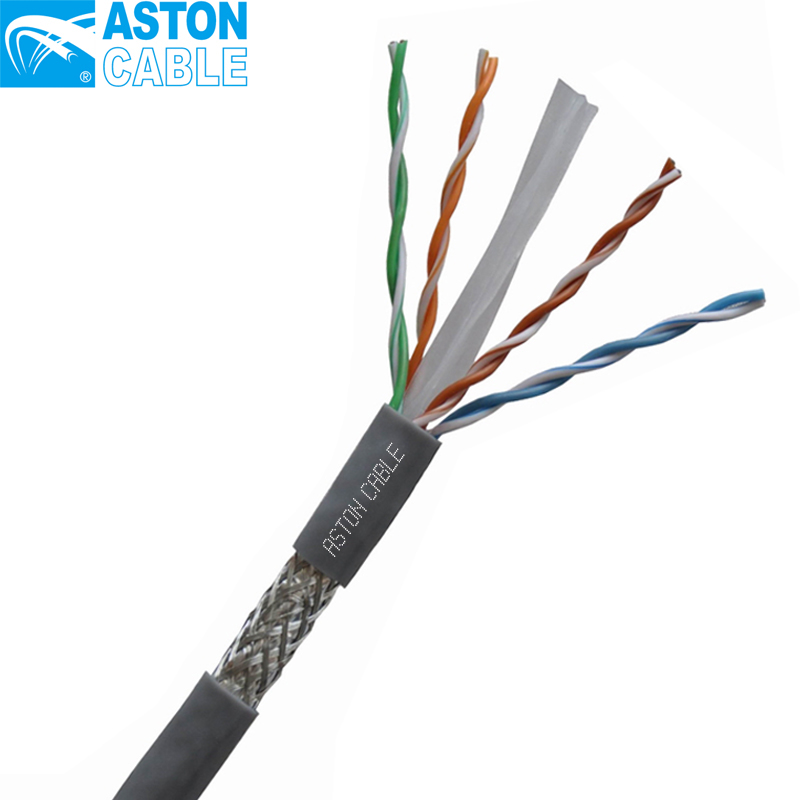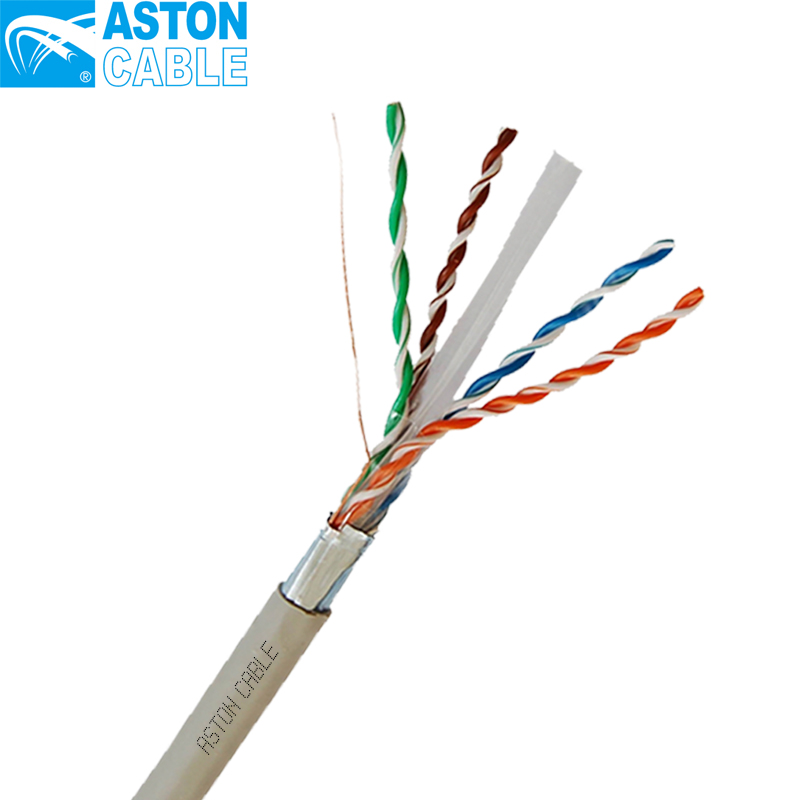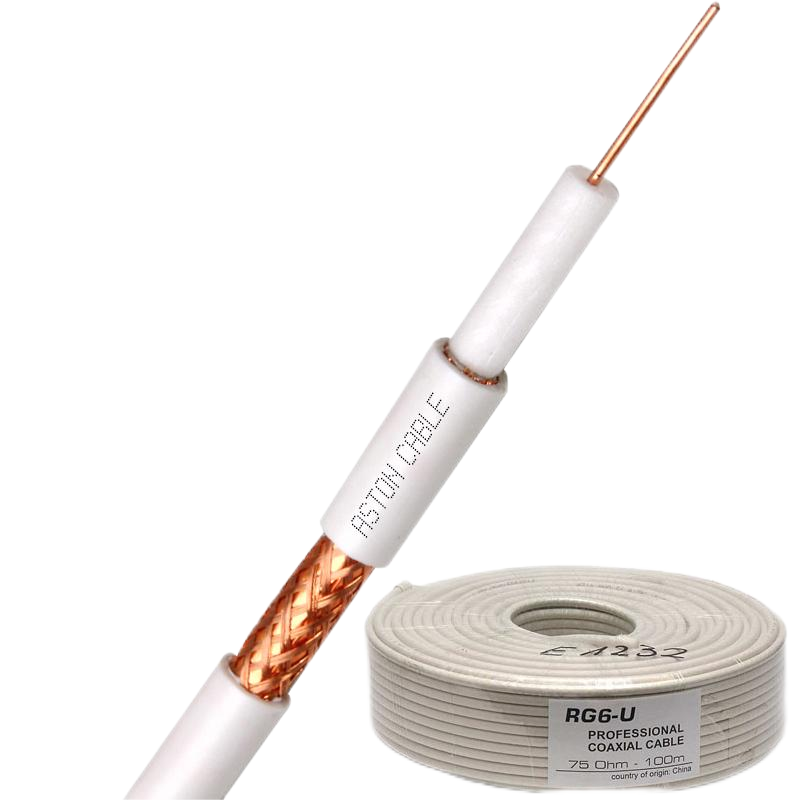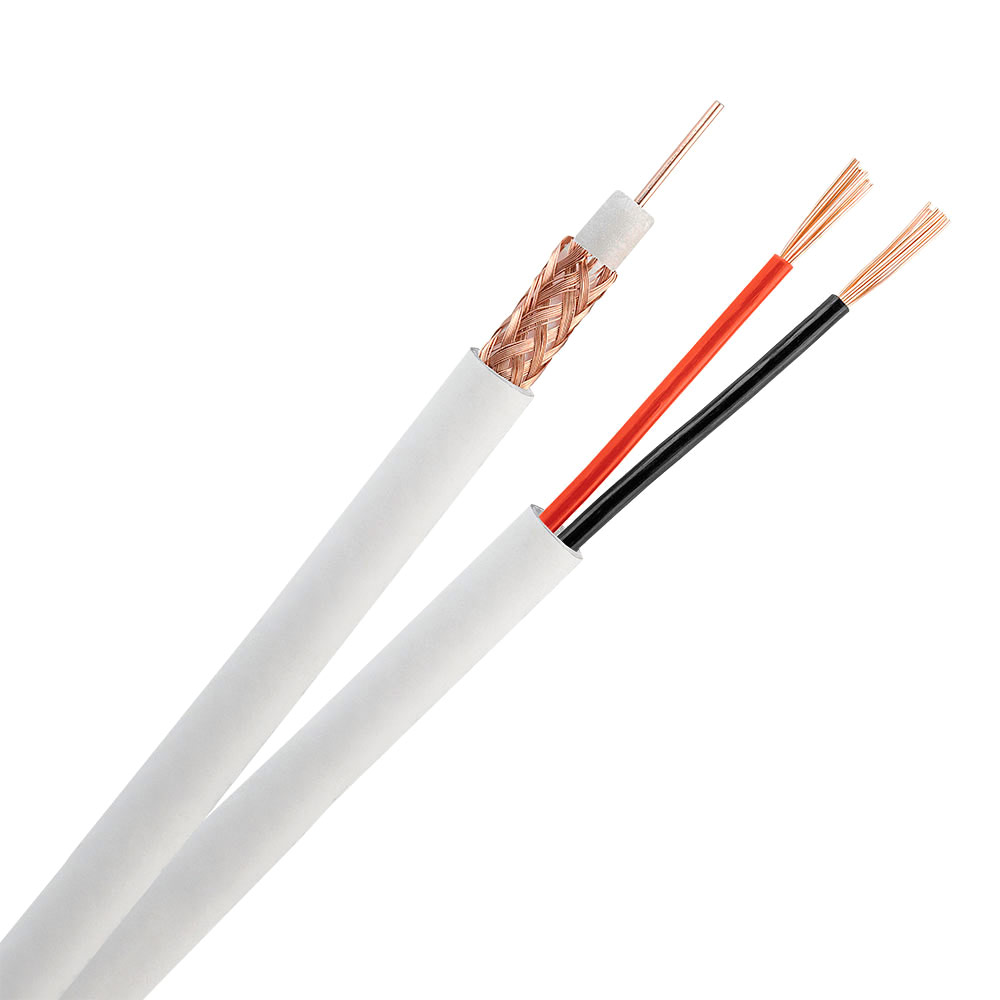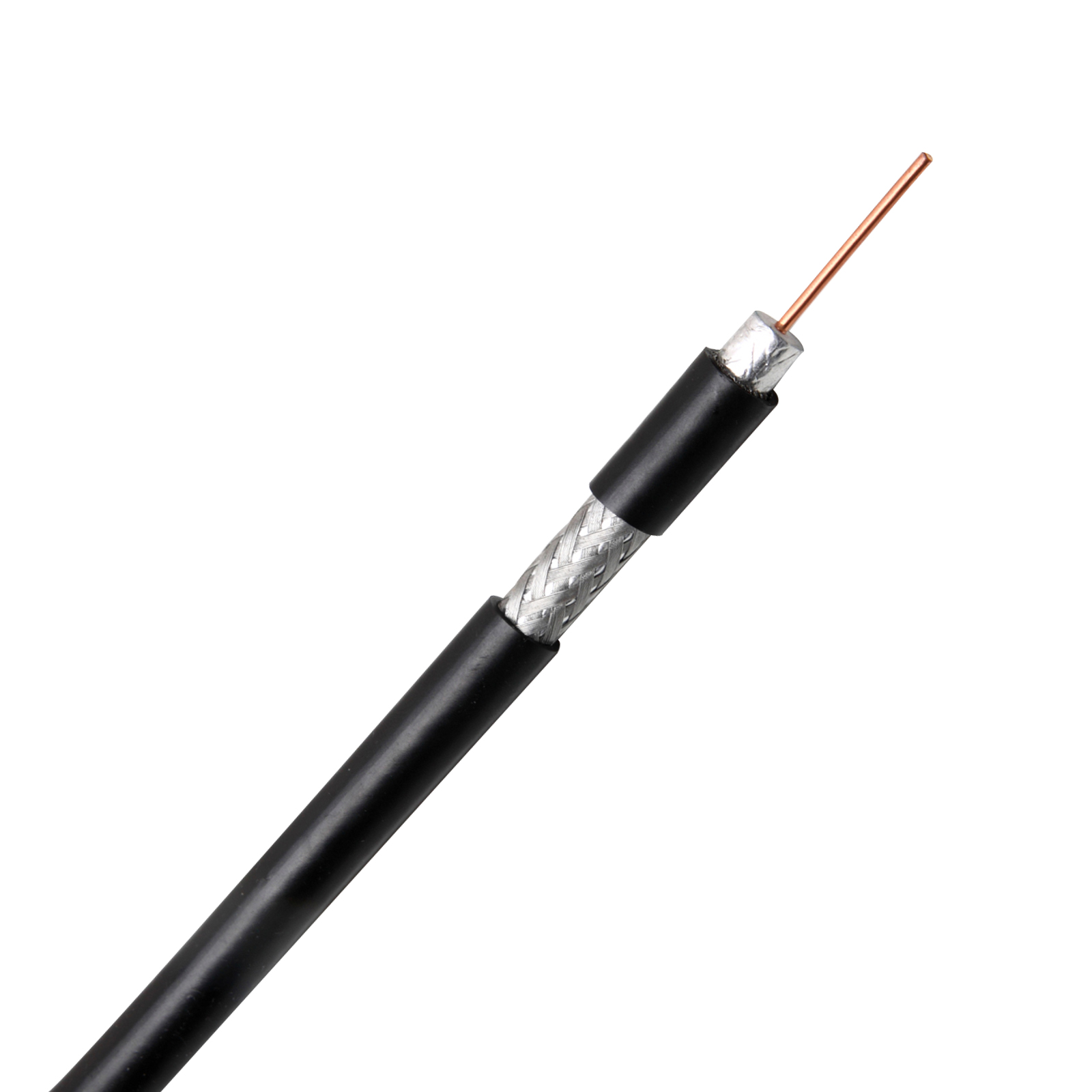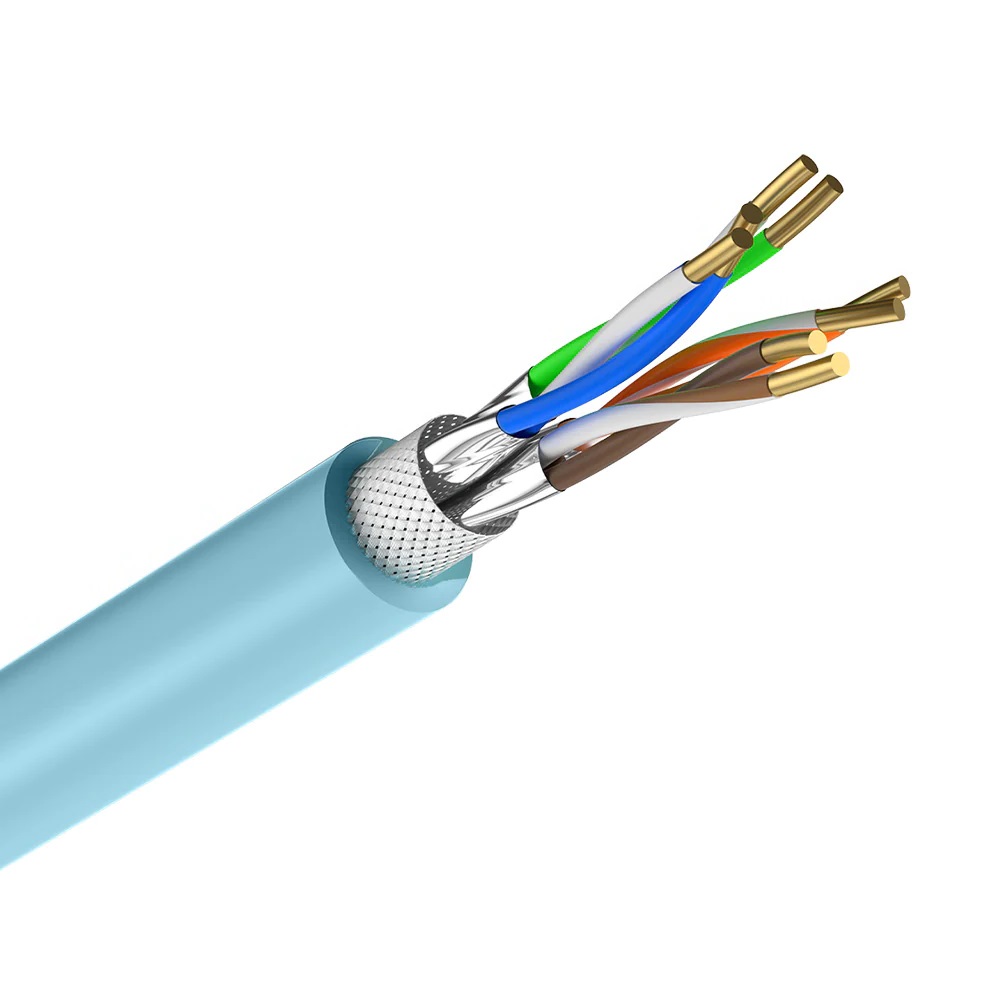Product Main Parameters
| Parameter | Specification |
|---|---|
| Conductor | 23AWG Bare Copper/CCA |
| Insulation | PE Retardant |
| Outer Jacket | PVC, PE or LSZH |
| Shielding | Aluminum Foil and Al Braiding |
Common Product Specifications
| Specification | Details |
|---|---|
| Frequency | 250 MHz |
| Speed | Up to 10 Gbps |
| Length | 305 meters/roll |
Product Manufacturing Process
The manufacturing process for CAT6 copper network cables incorporates state-of-the-art technology and strict quality control. The process begins with selecting high-grade copper for the conductor, followed by precision drawing and annealing to enhance conductivity and ductility. The drawn wires are insulated with polyethylene, meeting IEC standards for flame retardance. Shielding is applied using aluminum foil and braiding to prevent electromagnetic interference, ensuring signal integrity. This is crucial in environments with high electrical noise. The final step involves jacketing the cable with PVC, PE, or LSZH material, ensuring durability and fire safety.
Product Application Scenarios
CAT6 copper network cables are essential in modern data communication, utilized in various settings from residential to commercial infrastructures. They serve as the backbone of Ethernet networks, connecting computers, routers, and switches in office buildings. Due to their shielding efficiency, they are preferred in industrial environments where electromagnetic interference is prevalent. Additionally, these cables are integral in setting up CCTV and security systems, providing reliable video transmission. Educational institutions also employ these cables for their networking needs, ensuring high-speed internet access for e-learning platforms.
Product After-Sales Service
Our after-sales service ensures customer satisfaction with robust support and warranties. We offer a 3-year warranty on all CAT6 copper network cables, covering manufacturing defects. Technical assistance is available 24/7 to address installation or performance issues. We also provide installation guides and troubleshooting resources online. For returns or exchanges, a straightforward process is in place, ensuring minimal inconvenience. We strive to maintain long-term relationships with our clients, providing updates on new products and improvements.
Product Transportation
We ensure timely delivery of CAT6 copper network cables through a reliable logistics network. Orders are processed promptly, with standard export packaging for protection during transit. We ship globally via established courier services, offering tracking options for order visibility. Lead times vary based on order size and destination, but we prioritize efficient shipping to minimize delays. For large orders, we offer customized logistics solutions to meet specific client needs, ensuring cables arrive in pristine condition.
Product Advantages
- Cost-effective solutions without compromising quality.
- Easy installation and maintenance with flexible cabling.
- High performance for short to medium distances.
- Durability with effective shielding against interference.
Product FAQ
- What is the main advantage of using copper network cables over fiber optics? Copper network cables are more cost-effective, making them a preferred choice for many businesses. They are easier to install, especially in existing infrastructures, and provide adequate performance for short to medium distances. Suppliers of copper network cables often offer competitive pricing compared to fiber optic alternatives.
- Are your CAT6 copper network cables compliant with industry standards? Yes, our CAT6 copper network cables are compliant with ISO9001, ISO14001, and other industry standards. Suppliers, including us, ensure that these cables meet international standards for quality and safety, providing reliable and high-performance networking solutions.
- What is the difference between UTP and STP cables? Unshielded Twisted Pair (UTP) cables lack shielding, making them suitable for low-interference environments. Shielded Twisted Pair (STP) cables include an additional shielding layer, protecting against electromagnetic interference, making them ideal for high-noise settings. Suppliers often provide both options to cater to different needs.
- Can these cables be used for outdoor installations? Yes, suppliers offer CAT6 copper network cables with weatherproof jackets, such as PE, suitable for outdoor installations. These cables are designed to withstand environmental factors, ensuring durability and performance in various conditions.
- What is the typical application of CAT6 copper network cables? CAT6 copper network cables are commonly used for Ethernet networks in homes, offices, and data centers, supporting high-speed internet and network connections. Suppliers often stock these cables due to their wide application and demand.
- Do you provide OEM services for these cables? Yes, we and many suppliers offer OEM services, allowing clients to customize branding, packaging, and specifications to meet unique requirements, providing tailored networking solutions.
- How do I choose the right CAT6 cable for my needs? Consider factors such as the required data transmission speed, environmental conditions, and distance. Suppliers can provide guidance and recommendations based on specific networking needs and scenarios.
- What is the maximum data rate supported by CAT6 cables? CAT6 cables support data rates up to 10 Gbps over a maximum distance of 55 meters. For distances up to 100 meters, a data rate of 1 Gbps is recommended, as confirmed by suppliers.
- How does shielding benefit CAT6 cables? Shielding protects against electromagnetic interference, enhancing signal integrity and performance, especially in electrically noisy environments. Suppliers of copper network cable integrate shielding to ensure reliable data transmission.
- Can these cables be used for PoE applications? Yes, suppliers offer CAT6 copper network cables compatible with Power over Ethernet (PoE), allowing simultaneous data and power transmission, useful for devices like IP cameras and wireless access points.
Product Hot Topics
- The Role of Copper Network Cables in Modern Networking Copper network cables remain essential in today's networking scenarios, balancing cost and performance. Suppliers continuously improve these cables, providing options that meet current demands for speed and reliability. Despite the rise of fiber optics, copper network cables are favored for their flexibility and established infrastructure. Suppliers play a crucial role in offering innovative solutions, ensuring copper cables remain relevant.
- Advancements in Copper Cable Technology With technological progress, copper network cables have seen significant advancements, such as improved shielding and insulation materials. Suppliers are at the forefront, providing cables optimized for high-speed data transmission with minimized interference. These enhancements ensure that copper network cables continue to meet the evolving needs of modern communication systems.
- Copper vs. Fiber: Choosing the Right Network Cable Deciding between copper and fiber network cables depends on several factors, including budget, distance, and performance requirements. While fiber offers higher speeds and longer distances, copper cables are more cost-effective and easier to install. Suppliers can assist in determining the optimal choice for specific applications, considering both current and future needs.
- Environmental Considerations in Network Cable Production As environmental awareness grows, suppliers are adopting eco-friendly practices in the production of copper network cables. This includes using recyclable materials for insulation and jacketing, as well as implementing energy-efficient manufacturing processes. These efforts reduce the environmental impact, making copper network cables a sustainable choice.
- Integrating Copper Cables in Smart Home Networks With the increasing popularity of smart home technologies, copper network cables provide reliable connectivity, supporting various devices like smart TVs, security systems, and home automation hubs. Suppliers offer cables optimized for these applications, ensuring seamless integration and performance in smart home networks.
- The Impact of 5G on Copper Network Cables The advent of 5G technology presents both challenges and opportunities for copper network cables. While 5G offers enhanced wireless communication, wired networks, including those using copper cables, remain crucial for supporting infrastructure. Suppliers are innovating to ensure copper cables meet the demands of 5G, providing high-speed and low-latency connections.
- Maintenance Tips for Copper Network Cables Proper maintenance ensures the longevity and performance of copper network cables. Regular inspections and cleaning of connectors, avoiding excessive bending, and ensuring proper installation are essential. Suppliers often provide guidelines and support for maintaining the integrity of these cables, ensuring consistent performance.
- Optimizing Office Networks with Copper Cables In office environments, copper network cables offer reliable connectivity for a range of devices, from computers to VoIP phones. Suppliers provide solutions tailored to office needs, ensuring efficient data flow and minimizing downtime. Proper planning and installation of copper cables enhance productivity and communication within office networks.
- Copper Network Cables in Educational Institutions Educational institutions rely on robust network infrastructure to support e-learning and digital resources. Copper network cables play a vital role, offering cost-effective solutions for high-speed internet and reliable connectivity. Suppliers work with schools and universities to provide customized network solutions, supporting educational advancements.
- Future Trends in Copper Cable Networking As networking needs evolve, so do the technologies behind copper network cables. Suppliers are focused on developing cables that offer greater efficiency and performance, integrating advancements like higher bandwidth capabilities and enhanced shielding. These trends ensure that copper cables remain a viable option in the ever-changing landscape of communication technologies.
Image Description
